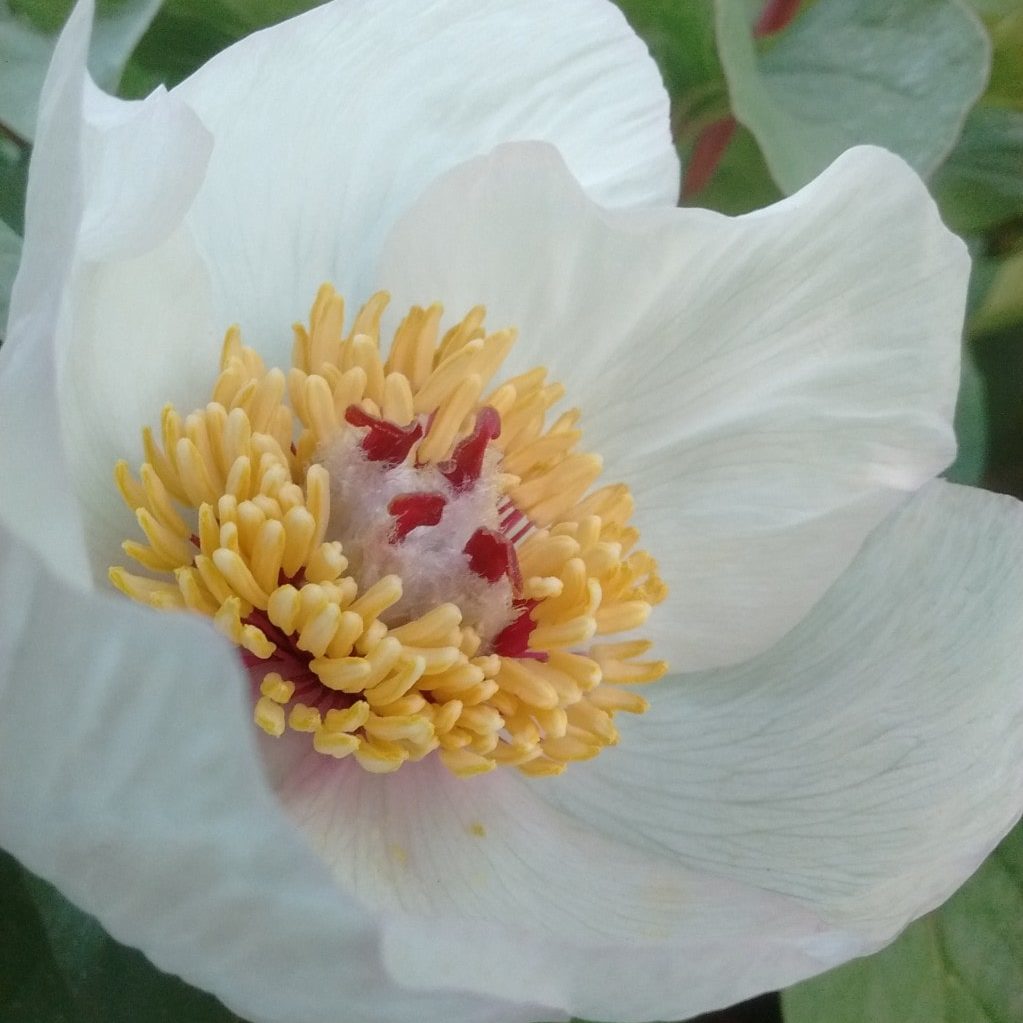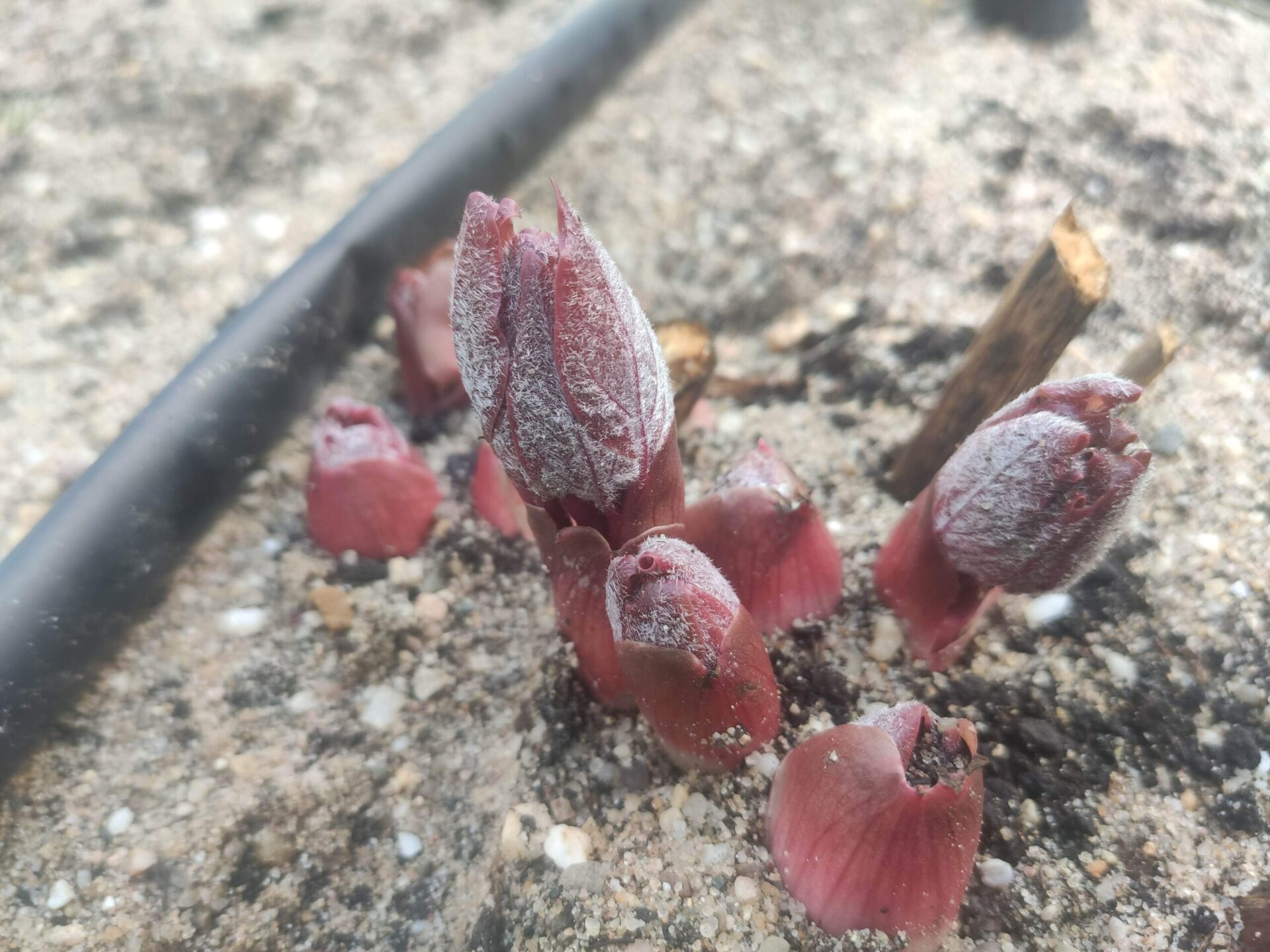khurtekant wrote a new post
3 CommentsCORRECTION. Please delete my previous translation:
Translation of the text found in: https://arastirma.tarimorman.gov.tr/yalovabahce/Menu/35/Sus-Bitkileri
Please comment with your corrections, as I am no botanist:
Top of Page:
(‘Alo’ Numbers for calling Social Services, Food Safety Line, Forest Fire Emergency Lines, Vision Impaired Link)Page Title:
Turkish Republic, Ministry of Agriculture and Forestry
Atatürk Garden Culture Central Research Institute DirectorateDecorative Plants
Being the first decorative plant to be developed in our natural resource-rich country, the Peony is currently being researched by our institute, and its breeding rights have been taken under protection.
Alev Topu: ‘Fireball’ [‘Flame Ball’]
This variety, being a hybrid of Paeonia peregrina, has multilayered red flowers, is scented and perennial. Blooms in the first week of May. Its segmented green leaves are also decorative. Its blooms are sterile in structure, and, having been observed to very rarely show a tendency to bear fruit, its production by seeding is not economically feasible. Instead, it is produced by root separation and tissue culture. When propagated by root separation, if blooms are expected of each piece of tuber root within the year, a tuber root must contain at least 3 offshoot eyes. The separation process can be realised every 3 to 4 years.
Eful
This variety, This variety, being a hybrid of Paeonia peregrina, has multilayered deep pink flowers, is very beautifully scented and perennial. Blooms in the first week of May. Its segmented green leaves are also decorative. Its blooms are sterile in structure, and, having been observed to very rarely show a tendency to bear fruit, its production by seeding is not economically feasible. Instead, it is produced by root separation and tissue culture. When propagated by root separation, if blooms are expected of each piece of tuber root within the year, a tuber root must contain at least 3 offshoot eyes. The separation process can be realised every 3 to 4 years.
Kaya [‘Rock’, Most likely a reference to Mr Erdal Kaya]
This variety, being chosen by selection methods from the population of the hybrid natural species of Paeonia x kayae, is deep pink – white variegated in colour, has single layered blooms, lightly scented and early bloomer. Blooms in the first week of April. Its tri-segmented oval green leaves and fruit that crack open in autumn are also quite decorative. Produces quite a lot of seeds, and, therefore, in addition to being able to be propagated by seeding, it can also be produced by separation and tissue culture. When produced by separation, if blooms are expected of each piece of tuber root within the year, the tuber roots must contain at least 3 offshoot eyes. The separation process can be realised every 3 to 4 years.
Tombak [‘Iranian Goblet Drum’]
Blooms in the first week of May. Its segmented green leaves are also decorative. Its blooms are sterile in structure, and, having been observed to very rarely show a tendency to bear fruit, its production by seeding is not economically feasible. Instead, it is produced by root separation and tissue culture. When propagated by root separation, if blooms are expected of each piece of tuber root within the year, a tuber root must contain at least 3 offshoot eyes. The separation process can be realised every 3 to 4 years.
Your previous translation was deleted as requested. The translation is good I think, thank you. It describes four of the varieties that have been introduced. Three of them hybrids with P. peregrina (what the other species or plants are is not being told, but the ‘segmented’ leaves surely come from P. peregrina) and one selection from P. x kayae. There are more varieties by now, but I singled out these two in the text simply because they had the clearest photographs. The descriptions are rather short, they describe the flower and flowering time, but length, floriferousness, sturdiness and so on are missing. Remarkably they also say ‘production by seedlings is not economically viable’ because the more double varieties hardly give any seed. I’m quite sure they must know that cultivars don’t come true from seed anyway, so even with lots of seeds it would not have been an option. P. kayae might be an option to multiply through seeds, if they are selfed you’ll still end up with the same species, but again: not the same cultivar plant, thus the resulting seedlings might as well be much more white or pink, be smaller or taller etcetera… I do wonder whether some growers already have these in their fields for either cut flowers or to sell as garden plants. The few images or information I can find from Turkish growers always show the standard lactiflora varieties which are grown all over the world.
Ready for Winter. Cut down with some 10 cm left as research has shown this results in the least amount of botrytis the following year. The precise drip irrigation is also showing nicely on this picture, only water where it’s needed. Halfway to end of December the plants will receive their GA3 treatment and the sides of the polytunnel will be…Read More
2 CommentsGA3 should be used before the begainning of peony’s dormancy, i.e, halfway to end of December in Belgium?
@lindapeony Not at the beginning. They need some natural cold, then after this you can shorten their cold requirements by giving the GA3 and if late enough and warm enough, they will start growing before they normally would. If you give it at the beginning of the cold period (which has already started no doubt with the colder nights) it will not…Read More
khurtekant posted in the group Species Peonies International Network (SPIN)
Root shapes from some well-grown species.
1. P. daurica ssp wittmanniana
2. P. mascula ssp bodurii
3. P. daurica ssp velebitensis
4. P. morisiikhurtekant posted in the group Species Peonies International Network (SPIN)
Paeonia daurica ssp daurica. Sometimes known as the ‘Crimean Peony’ (although there is also P. tenuifolia growing there). Old names P. triternata or even P. corallina triternata. According to Hong this species grows there but also in Turkey and westwards to former Yugoslavia. The Crimean version is known to have wavy leaflets (much more than my…Read More
3 Commentskhurtekant posted in the group Species Peonies International Network (SPIN)
Paeonia flavescens. From selfed seeds from a wild plant which originated in Sicily (around Palermo). Theoretically a synonym for either P. mascula russoi or P. mascula hellenica, and thus not officially recognized as a species itself, though there’s reason to believe it is. It resembles neither of those synonyms in fact. Looks most like mascula…Read More
1 Commentkhurtekant posted in the group Species Peonies International Network (SPIN)
Paeonia morisii from Sardinia (Sardegna). According to Hong a synonym for P. corsica, which is very variable. It might be argued that his classification of P. corsica is not completely perfect as there is a P. corsica on the island of Corsica which is different from this one and there is also P. sandrae on Sardinia which is different as well. And…Read More
1 Commentkhurtekant posted in the group Species Peonies International Network (SPIN)
Paeonia kesrouanensis (or P. turcica depending on your views). Naturally growing along the eastern Mediterranean countries at higher elevations under some shadow from trees and shrubs. From south-eastern Turkey downwards to Syria and Lebanon. In southern and south-western Turkey the P. turcica, which is supposedly a synonym according to Hong, is…Read More
1 Commentkhurtekant posted in the group Species Peonies International Network (SPIN)
Paeonia broteri grows wild in Portugal and Spain. If you’re looking for seeds from nature you can order them from the Portuguese seed company Sementes Vivas. They are located close to a natural population in Touloes, Idanha-a-nova close to the border with Spain in the middle of Portugal. It is known there as Rosa Albardeira and the company is…Read More
1 CommentThank you very, very much!
I hunted them out online, and have found the following, in Portuguese, English, AND French:
https://www.sementesvivas.bio/en/sementes-heritage/548-rosa-albardeira.htmlWhere, unfortunately, Rosas Abardeiras seem to have sold out. Still, I am hopeful. Will email them.
khurtekant posted in the group Species Peonies International Network (SPIN)
Paeonia brownii. The few seeds I received over the years usually germinated, but the seedlings always died pretty soon. Giessler peonies in Germany seems to have more knowledge and sells these wonderful roots. I cannot see whether they are grafted upon roots of P. delavayi as he is able to do, but I do hope to be able to grow it a least a few years.
1 CommentHow could we have missed this? Two long articles on peonies in the ‘International Rock Gardener’ magazine. It’s a publication from the Scottish Rock Garden Club.
“This month IRG presents two articles on peonies – the first on Czech bred
herbaceous peonies from Pavel Sekerka and the second on tree peonies by Joe
Harvey in Canada. “…Read More- Load More Posts



























































I don’t know whether to laugh or cry with joy.
Thank you very, very much!